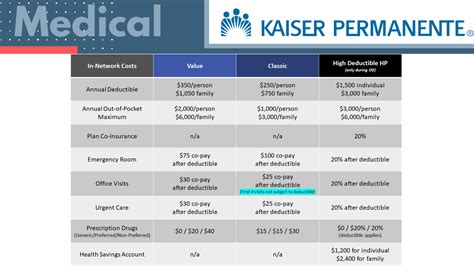Intro
Discover if Kaiser Permanente is a non-profit organization, exploring its business model, tax status, and community benefits, amidst healthcare non-profit organizations and charitable foundations.
Kaiser Permanente is a unique organization that operates as a non-profit health plan and hospital system in the United States. To understand its non-profit status, it's essential to delve into the organization's history, structure, and mission.
Kaiser Permanente was founded in 1945 by Henry J. Kaiser and Sidney Garfield, with the goal of providing high-quality, affordable healthcare to the public. The organization has since grown to become one of the largest and most successful health systems in the country, with over 12 million members and a presence in eight states.
One of the key factors that distinguish Kaiser Permanente from other health systems is its non-profit status. As a non-profit organization, Kaiser Permanente is exempt from federal income tax under Section 501(c)(3) of the Internal Revenue Code. This means that the organization is not required to pay taxes on its income, which allows it to reinvest its profits back into the community.
However, being a non-profit organization does not mean that Kaiser Permanente does not generate revenue or make a profit. In fact, the organization has reported significant profits in recent years, with net income totaling over $4 billion in 2020. So, how does Kaiser Permanente use its profits, and what does its non-profit status mean for its members and the community?
Understanding Kaiser Permanente's Non-Profit Status

Kaiser Permanente's non-profit status is based on its mission to provide high-quality, affordable healthcare to its members. The organization is governed by a board of directors that includes representatives from the medical community, as well as community leaders and members. This governance structure helps ensure that Kaiser Permanente remains true to its mission and prioritizes the needs of its members.
One of the key benefits of Kaiser Permanente's non-profit status is its ability to reinvest its profits back into the community. The organization uses its profits to improve its facilities, expand its services, and invest in new technologies and research. This allows Kaiser Permanente to provide high-quality care to its members while also contributing to the overall health and well-being of the community.
How Kaiser Permanente Uses Its Profits
Kaiser Permanente uses its profits in a variety of ways, including: * Investing in new technologies and research to improve patient care and outcomes * Expanding its services to meet the growing needs of its members * Improving its facilities and infrastructure to provide a better patient experience * Supporting community health programs and initiatives to promote health and wellness * Providing financial assistance to low-income members and those in needThe Benefits of Kaiser Permanente's Non-Profit Status

Kaiser Permanente's non-profit status provides several benefits to its members and the community. Some of the key benefits include:
- Affordable healthcare: Kaiser Permanente's non-profit status allows it to provide affordable healthcare to its members, with a focus on preventive care and early intervention.
- High-quality care: Kaiser Permanente is committed to providing high-quality care to its members, with a focus on evidence-based medicine and patient-centered care.
- Community investment: Kaiser Permanente's non-profit status allows it to reinvest its profits back into the community, supporting local health initiatives and promoting health and wellness.
- Transparency and accountability: As a non-profit organization, Kaiser Permanente is committed to transparency and accountability, with a focus on providing clear and accurate information to its members and the community.
Challenges Facing Kaiser Permanente
Despite its many benefits, Kaiser Permanente faces several challenges in the rapidly changing healthcare landscape. Some of the key challenges include: * Increasing competition: Kaiser Permanente faces increasing competition from other health systems and insurers, which can make it challenging to attract and retain members. * Regulatory changes: Changes in regulatory requirements and reimbursement models can impact Kaiser Permanente's ability to provide affordable care to its members. * Technological advancements: The rapid pace of technological change in healthcare requires Kaiser Permanente to invest in new technologies and systems to remain competitive and provide high-quality care.Conclusion and Future Outlook

In conclusion, Kaiser Permanente's non-profit status is a key factor in its ability to provide high-quality, affordable healthcare to its members. The organization's commitment to transparency, accountability, and community investment makes it a leader in the healthcare industry. As the healthcare landscape continues to evolve, Kaiser Permanente is well-positioned to meet the changing needs of its members and the community.
Kaiser Permanente's future outlook is promising, with a focus on expanding its services, investing in new technologies, and promoting health and wellness in the community. With its strong governance structure, commitment to quality care, and focus on community investment, Kaiser Permanente is likely to remain a leader in the healthcare industry for years to come.
Final Thoughts
Kaiser Permanente's non-profit status is a unique aspect of its organization, allowing it to prioritize the needs of its members and the community. As a non-profit health plan and hospital system, Kaiser Permanente is committed to providing high-quality, affordable care to its members, while also investing in the community and promoting health and wellness.What is Kaiser Permanente's non-profit status?
+Kaiser Permanente is a non-profit health plan and hospital system, exempt from federal income tax under Section 501(c)(3) of the Internal Revenue Code.
How does Kaiser Permanente use its profits?
+Kaiser Permanente uses its profits to improve its facilities, expand its services, and invest in new technologies and research, as well as support community health programs and initiatives.
What are the benefits of Kaiser Permanente's non-profit status?
+The benefits of Kaiser Permanente's non-profit status include affordable healthcare, high-quality care, community investment, and transparency and accountability.
We hope this article has provided you with a comprehensive understanding of Kaiser Permanente's non-profit status and its benefits. If you have any further questions or comments, please feel free to share them below. You can also share this article with others who may be interested in learning more about Kaiser Permanente and its mission to provide high-quality, affordable healthcare.
